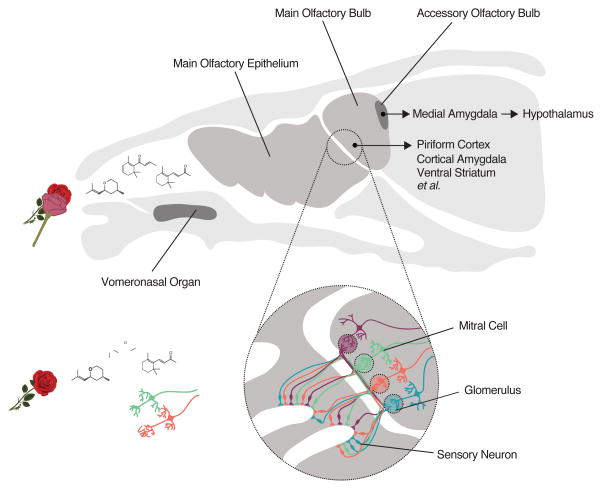Figure 1.
Organization of the mouse olfactory system (partially adapted from Dulac & Torello, 2003). Odors are blends of molecular compounds inhaled into the nasal cavity, where they interact with olfactory receptor proteins expressed in the main olfactory epithelium (medium gray), the vomeronasal organ (dark gray), or one of several smaller sensory structures not pictured (upper). Each sensory neuron expresses a single olfactory receptor denoted by its color, and neurons expressing the same receptor project to insular structures in the olfactory bulb called glomeruli (lower). Glomeruli corresponding to a given receptor have stereotyped spatial positions across animals. Mitral cells in the olfactory bulb each send a dendrite into one glomerulus (main olfactory bulb) or multiple glomeruli corresponding to the same olfactory receptor (accessory olfactory bulb, not pictured), and project axons to a variety of central brain regions that mediate odor learning and innate odor-driven behaviors. The targets of main and accessory bulb mitral cell projections are largely distinct.

